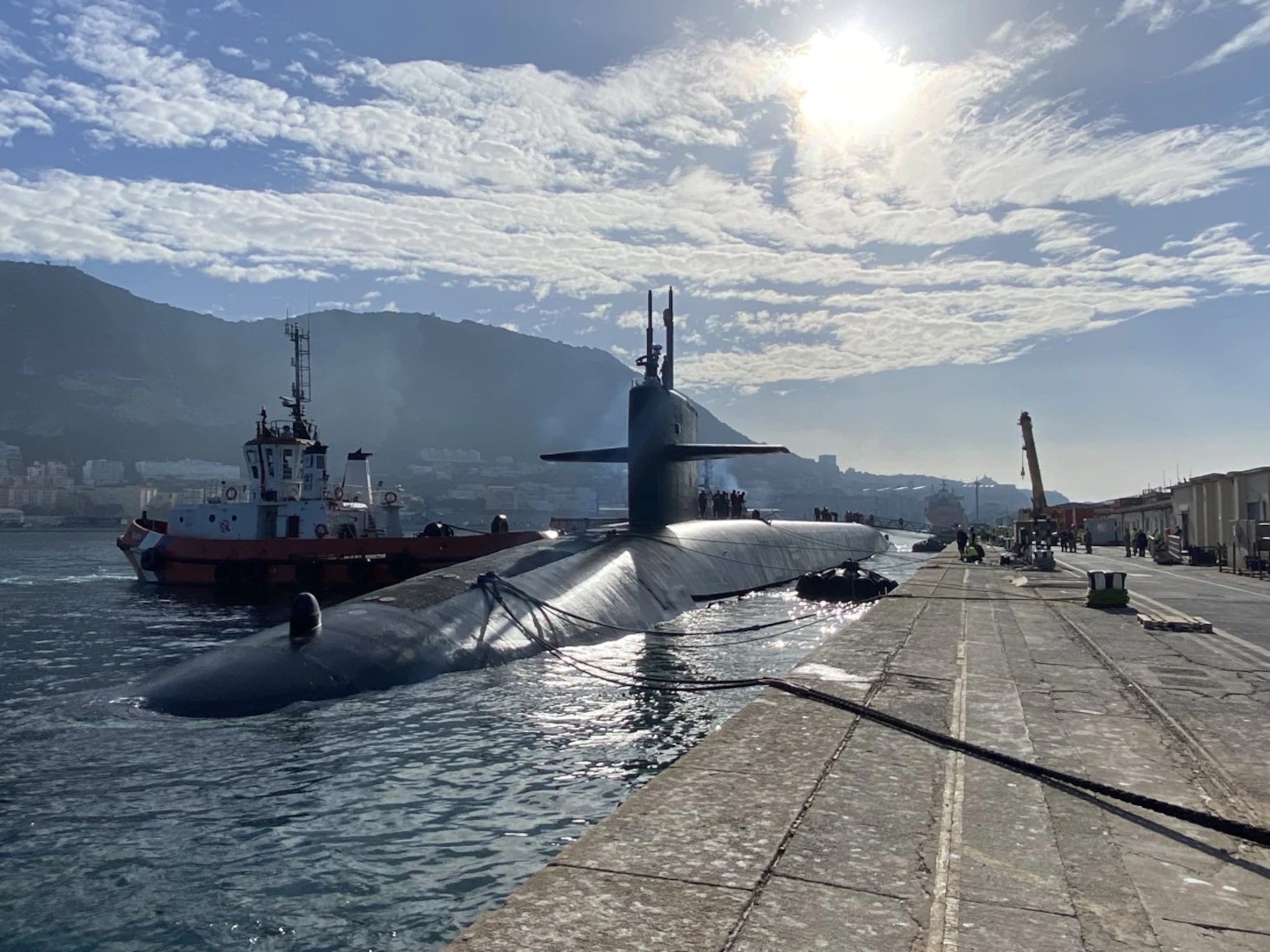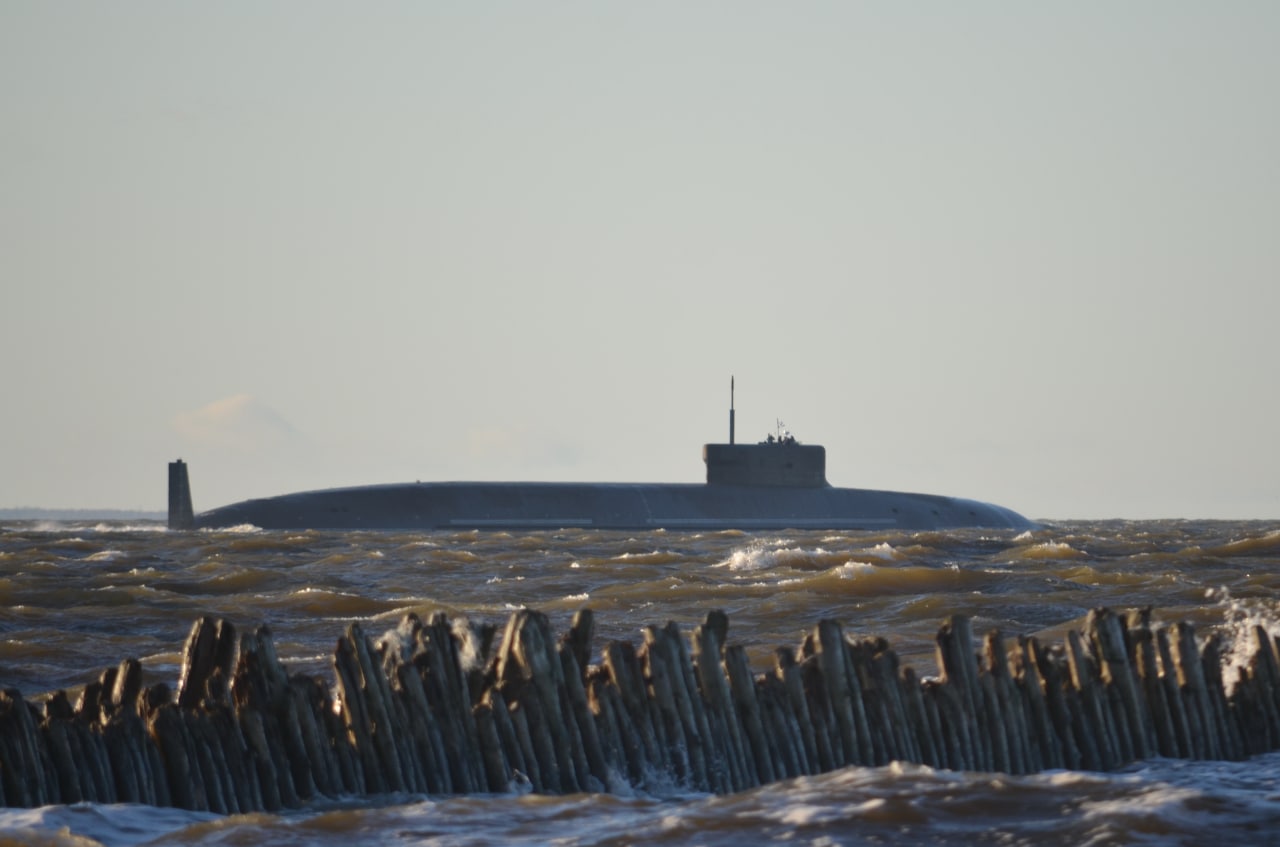In another show of nuclear brinkmanship, both US and Russian nuclear submarines have positioned themselves in strategic locations, as the war in Ukraine shows no signs of abating.
Meanwhile, Russian nuclear submarine Generalissimus Suvorov successfully fired a Bulava ballistic missile from the White Sea at the Kura range as part of the final stage of state tests, the Russian Defense Ministry said.
“The crew of the newest strategic missile submarine Generalissimus Suvorov of the Borey-A project, successfully fired the Bulava ballistic missile as part of the final stage of state tests,” the statement says.
“Missile firing was carried out from a submerged position from the White Sea at the Kura training ground on the Kamchatka Peninsula. The flight of the Bulava ballistic missile took place in normal mode. According to the confirmed data of objective control, the warheads of the missile successfully arrived in the specified area of the Kura range,” the ministry noted.
The Generalissimus Suvorov strategic missile submarine is the second serial ship of the Borei-A project. It was built at the Sevmash production association in Severodvinsk. The submarine belongs to the fourth generation of nuclear submarine missile carriers and is equipped with modern systems of missile and torpedo weapons, navigation, radio engineering and sonar weapons. It boasts high maneuverability and acoustic stealth.
US-Russia Tensions: Earlier ET Report
Both the US-led North Atlantic Treaty Organization (NATO) and Russia recently concluded their annual nuclear drills, Steadfast Noon and GROM, amid heightened tensions.
While they were still periodic fixtures, with both sides duly informing the other of the maneuvers, the deployment of nuclear submarines added an element of unpredictability to an already volatile situation.
Meanwhile, Russia’s President Vladimir Putin clarified there is “no need” to use nuclear weapons in Ukraine, but the United States remains skeptical.
It also dismissed Russian claims that Ukraine is preparing a “dirty” nuclear bomb and pinning an atomic explosion on Russia. The US believes it serves as Moscow’s pretext to escalate the conflict. Russia has maintained it will use nuclear weapons only if the state’s territorial integrity is threatened.

US & Russian Submarines Position Themselves
American and Russian nuclear-powered ballistic missile submarines (SSBN) were pressed into action between November 1 and November 2 in an unscheduled deployment bound to raise regional tensions further.
Moreover, Russian authorities also released a Notice to Airmen (NOTAM) in the Barents Sea, effective between November 3 to 5. Many Russian handles suspected an imminent test launch of the Bulava Submarine Launched Ballistic Missiles (SLBM).
The US Navy moved first, announcing the arrival of its Ohio-class SSBN, USS Rhode Island, at Gibraltar on a “scheduled port visit.” The Rhode Island traveled from His Majesty’s Naval Base at Faslane in Scotland, which Russian defense commentators on Telegram said was a 12-day journey.
“This brief stop in the US Naval Forces Europe area of operations demonstrates the flexibility and adaptability submarines bring to US and allied forces in the region,” a statement from US Naval Forces Europe-US Naval Forces Africa (NAVEUR-NAVAF) said.
NAVEUR-NAVAF is a part of the US Sixth Fleet.
It was immediately followed by the NOTAM scheduled between November 3 to 5, with speculations rising over the launch of the Bulava SLBM from the Borei A-class Suvorov SSBN.
“It is currently at sea. We are waiting,” said one military enthusiast. Another post showed a picture of the submarine, also called Generalissimo Suvorov, leaving Severodvinsk in northern Russia.

The Submarines And Their Nuclear Missiles
The US Navy operates 14 Ohio-class SSBNs, each of which is understood to carry at least 20 Trident D5 SLBMs. Each missile can carry 14 individual nuclear warheads, autonomously steerable – or in a Multiple Independent Re-Entry Vehicle (MIRV) configuration.
The Trident D5s have a range of 6,437 kilometers (4,000 miles). Submarines are the US’ primary and retaliatory nuclear strike options, which keep 70% of its deployed nuclear force aboard stealthy submarines and stealth bombers.
With each displacing about 18,000 tons, the Ohio class is the largest submarine in the US Navy arsenal and the world’s third largest – behind the Soviet-era Typhoon class and, ironically, the Borei A-class itself. The Ohio class usually undertakes strategic deterrent patrols, signaling military and nuclear readiness during geopolitical tensions.
The Suvorov, part of the Generation 4 Project 955A Borei A-class, on the other hand, was launched only on September 13 this year. They are expected to replace the Soviet-era Delta III, Delta IV, and Typhoon-class submarines.
They carry sixteen R-30 ‘Bulava’ SLBMs in vertical silos, placed in two rows, reaching up to 8,300 kilometers (5,157 miles). Each Bulava missile is reported to be able to carry six nuclear warheads. The anticipated firing of the Bulava can be considered a part of Suvorov’s weapons firing trials.
Geopolitical Backdrop
Rhode Island’s deployment comes close on the heels of the tension in the Black Sea port of Sevastopol in Ukraine, where Russia accused Kyiv and the United Kingdom of carrying out a “terrorist attack” using multiple aerial and surface water drones.
Russian military observers also later pointed the finger at the US and NATO, whose RQ-4B Global Hawk drone was seen south of Crimea in the southern Black Sea, indicating it was involved in coordinating the attack.
Russia then announced its exit from the four-party grain deal signed with Ukraine, the United Nations, and Turkey.
While US official declarations of submarine deployments are rare, they are not unheard of. The USN, for instance, in June 2021 announced the visit of another Ohio-class SSBN, the USS Alaska, to British Overseas Territory (BOT) Gibraltar, the first such deployment in more than 20 years.
Then came the extremely rare official declaration of the USS West Virginia’s presence in the Arabian Sea on October 20 last month. These can be connected to geopolitical developments.
West Virginia was seen in response to the rising tensions with Iran over the stalled Iran Nuclear Deal (or Joint Comprehensive Plan of Action, JCPOA), Iranian-Israeli tensions, and most of all, tense Iranian-European ties over Tehran arming Russia with its Shahed-136 kamikaze drones.
Russian reports about the Suvorov deployment and the subsequent NOTAM are seen in response to Rhode Island’s Gibraltar visit. While there was no official announcement of the Suvorov’s presence in the Barents Sea, the possibility of the Bulava launch does indicate that Russia has the upper hand in this ‘nuclear signalling’ war.
Rhode Island firing an SLBM close to the European mainland would be considered highly escalatory and, therefore, unlikely.
- The author can be reached at satamp@gmail.com
- Follow EurAsian Times on Google News




